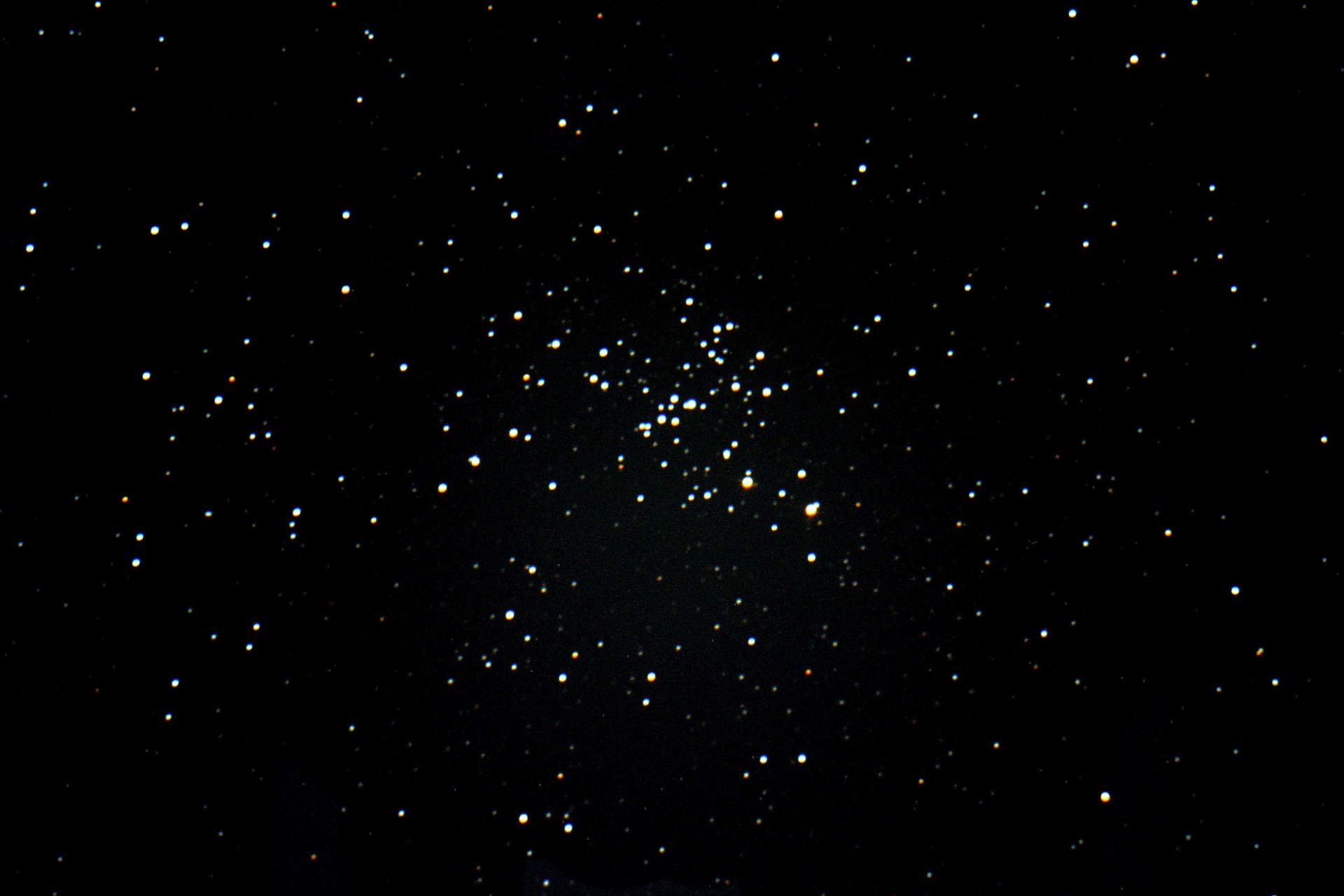M93
Messier 93 or M93, also known as NGC 2447, is an open cluster in the constellation Puppis. It was discovered by Charles Messier then added to his catalogue of comet-like objects on March 20, 1781. Caroline Herschel, the younger sister of William Herschel, independently discovered M93 in 1783, thinking it had not yet been catalogued by Messier. Walter Scott Houston described its appearance as follows:
Some observers mention the cluster as having the shape of a starfish. With a fair-sized telescope, this is its appearance on a dull night, but [a four-inch refractor] shows it as a typical star-studded galactic cluster.
It has a Trumpler class of I 3 r, indicating it is strongly concentrated (I) with a large range in brightness (3) and is rich in stars (r).
M93 is at a distance of about 3,380 light years from Earth and has a spatial radius of some 5 light years, a tidal radius of 13.1±2.3 ly, and a core radius of 4.2 ly. Its age is estimated at 387.3 million years. The cluster is positioned nearly on the galactic plane and it is following an orbit that varies between 28–29 kly (8.5–8.9 kpc) from the Galactic Center over a period of 242.7±7.9 Myr.
54 variable stars have been found in M93, including one slowly pulsating B-type star, one rotating ellipsoidal variable, seven Delta Scuti variables, six Gamma Doradus variables, and one hybrid δ Sct/γ Dor pulsator. Four spectroscopic binary systems in M93 include a yellow straggler component.
